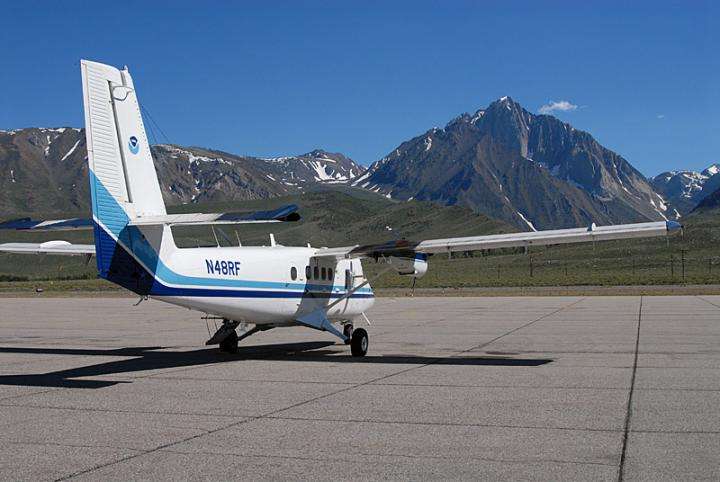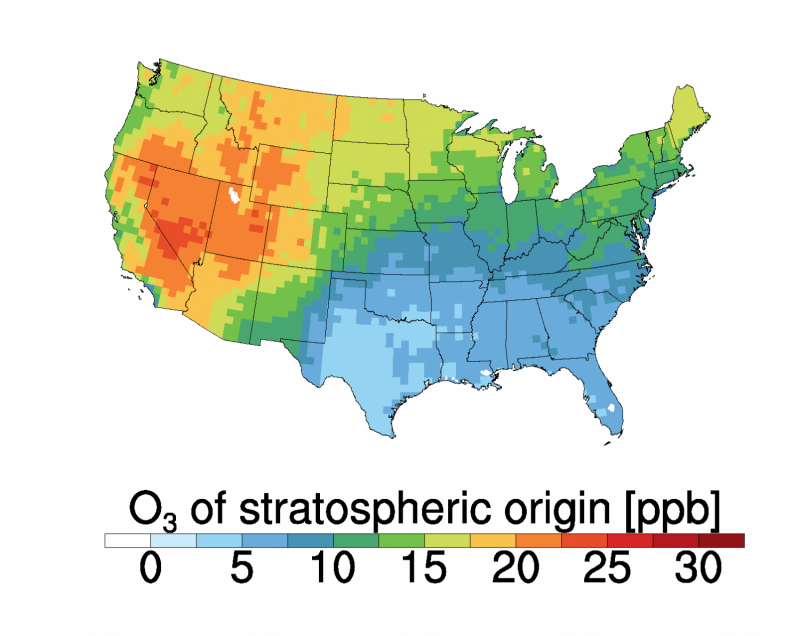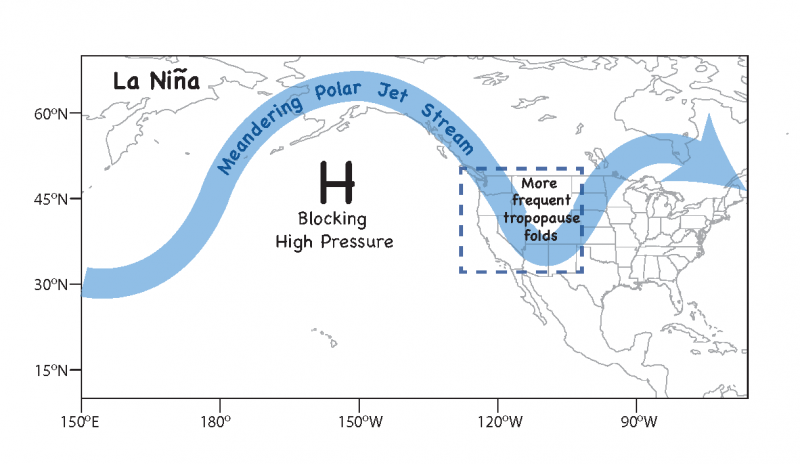New research will help forecast bad ozone days over the western US

New research published in Nature Communications led by Meiyun Lin of NOAA's Geophysical Fluid Dynamics Laboratory and NOAA's cooperative institute at Princeton University, reveals a strong connection between high ozone days in the western U.S. during late spring and La Niña, an ocean-atmosphere phenomena that affects global weather patterns.
Recognizing this link offers an opportunity to forecast ozone several months in advance, which could improve public education to reduce health effects. It would also help western U.S. air quality managers prepare to track these events, which can have implications for attaining the national ozone standard.
Exposure to ozone is harmful to human health, can cause breathing difficulty, coughing, scratchy and sore throats, and asthma attacks, and can damage sensitive plants.
"Ozone in the stratosphere, located 6 to 30 miles (10 to 48 kilometers) above the ground, typically stays in the stratosphere," said Lin. "But not on some days in late spring following a strong La Niña winter. That's when the polar jet stream meanders southward over the western U.S. and facilitates intrusions of stratospheric ozone to ground level where people live."
Over the last two decades, there have been three La Niña events - 1998-1999, 2007-2008 and 2010-2011. After these events, scientists saw spikes in ground level ozone for periods of two to three days at a time during late spring in high altitude locations of the U.S. West.

While high ozone typically occurs on muggy summer days when pollution from cars and power plants fuels the formation of regional ozone pollution, high-altitude regions of the U.S. West sometimes have a different source of high ozone levels in late spring. On these days, strong gusts of cold dry air associated with downward transport of ozone from the stratosphere pose a risk to these communities.
Lin and her colleagues found that these deep intrusions of stratospheric ozone could add 20 to 40 parts per billion of ozone to the ground-level ozone concentration, which can provide over half the ozone needed to exceed the standard set by the U.S. Environmental Protection Agency. The EPA has proposed tightening that standard currently set at 75 parts per billion for an eight-hour average to between 65 and 70 parts per billion.
Under the Clean Air Act, these deep stratospheric ozone intrusions can be classified as "exceptional events" that are not counted towards EPA attainment determinations. As our national ozone standard becomes more stringent, the relative importance of these stratospheric intrusions grows, leaving less room for human-caused emissions to contribute to ozone pollution prior to exceeding the level set by the U.S. EPA.
"Regardless of whether these events count towards non-attainment, people are living in these regions and the possibility of predicting a high-ozone season might allow for public education to minimize adverse health effects," said Arlene Fiore, an atmospheric scientist at Columbia University and a co-author of the research.

Predicting where and when stratospheric ozone intrusions may occur would also provide time to deploy air sensors to obtain evidence as to how much of ground-level ozone can be attributed to these naturally occurring intrusions and how much is due to human-caused emissions.
The study involved collaboration across two NOAA laboratories, NOAA's cooperative institutes at Princeton and the University of Colorado Boulder, and scientists at partner institutions in the U.S., Canada and Austria. It was also supported in part by the NASA Air Quality Applied Sciences Team whose mission is to apply earth science data to help address air quality management needs.
"This study brings together observations and chemistry-climate modeling to help understand the processes that contribute to springtime high-ozone events in the western U.S.," said Andrew Langford, an atmospheric scientist at NOAA's Earth System Research Laboratory in Boulder, Colorado, whose teams measure ozone concentrations using lidar and balloon-borne sensors.
"You've heard about good ozone, the kind found high in the stratosphere that protects the earth from harmful ultraviolet radiation," said Langford. "And you've heard about bad ozone at ground level. This study looks at the factors that cause good ozone to go bad."
Journal information: Nature Communications
Provided by NOAA Headquarters
















